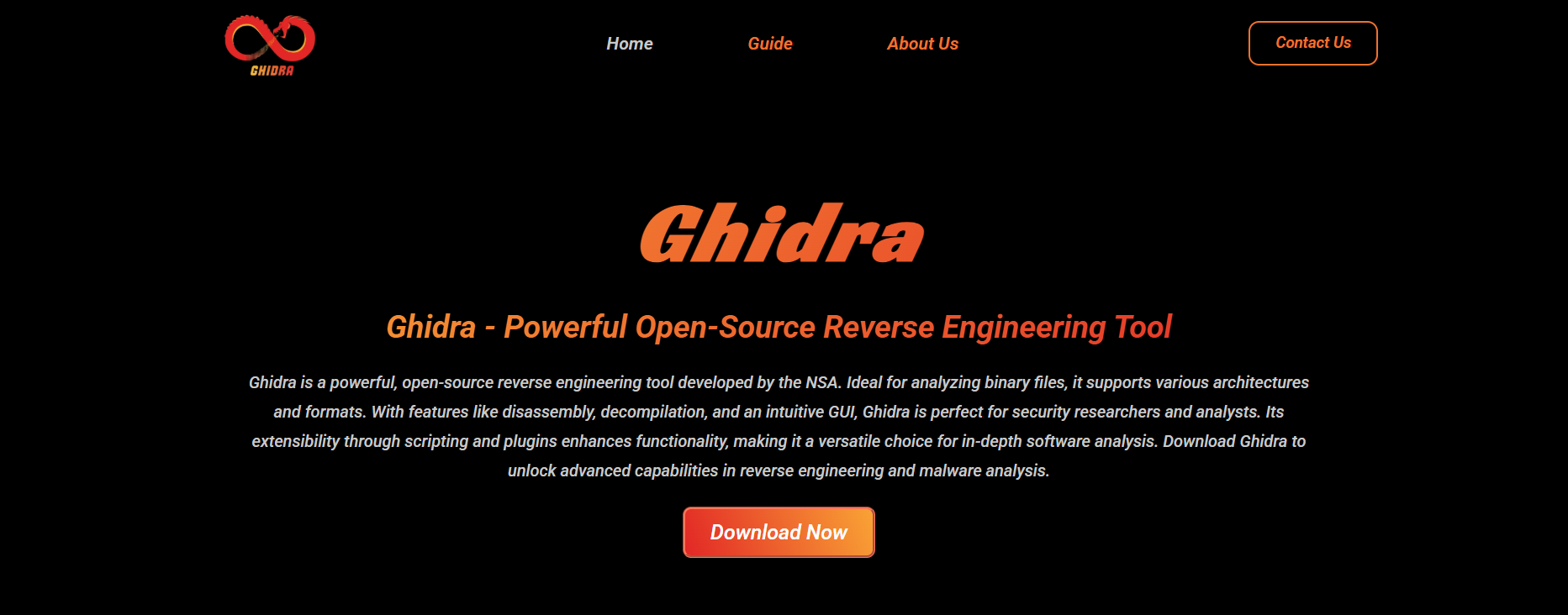How Does Ghidra Handle Complex Decompiled Code?

Ghidra has quickly established itself as a formidable force in the world of reverse engineering. Developed by the National Security Agency (NSA) and released as an open-source project in 2019, it brought serious competition to costly reverse engineering tools like IDA Pro. One of its standout features lies in its ability to decompile binary code into human-readable source code across multiple architectures. But when dealing with complex decompiled code, such as obfuscated binaries or deeply nested logic, how well does Ghidra perform?
This article dives deep into Ghidra’s mechanisms, techniques, and limitations when handling intricate decompiled code scenarios.
Reverse Engineering with Ghidra
Reverse engineering software involves translating compiled binaries back into a form that humans can read and understand—often assembly or even reconstructed high-level code. Ghidra does this through its Decompiler component, which takes the output from the disassembler and attempts to recreate something akin to the original source code. This is especially valuable in malware analysis, vulnerability research, and software auditing.
Ghidra supports numerous processor architectures (x86, ARM, MIPS, PowerPC, and more) and works across platforms like Windows, Linux, and macOS.
Internal Architecture That Enables Decompilation
The core of Ghidra’s decompilation system is based on Sleigh, a language used to describe the semantics of machine instructions. Each architecture’s instructions are modeled with Sleigh, enabling consistent translation across platforms.
The decompiler doesn’t merely turn instructions into pseudo-code. Instead, it constructs an intermediate representation (IR) called P-code, a simplified language that abstracts machine operations into a normalized form. From this representation, it builds control flow graphs and data flow models, making it possible to simulate execution paths and simplify complex code structures.
This process, while powerful, still encounters challenges when the input is not straightforward.
Challenges with Complex Decompiled Code
Complexity in decompiled code arises from several factors:
- Compiler optimizations that rearrange logic
- Handwritten assembly with nonstandard patterns
- Obfuscation techniques used in malware
- Heavy use of inline assembly or macros
- Control flow flattening and opaque predicates
- Self-modifying code
These elements obscure the intent of the original logic and make decompilation much harder.
Heuristics and Pattern Recognition
To manage complexity, Ghidra employs heuristic algorithms and pattern matching. For example, it tries to identify standard library functions or compiler-generated patterns. By recognizing these constructs, Ghidra can label and annotate the code more accurately, giving the user meaningful symbols instead of ambiguous variable names like var_1 or uVar2.
Its signature matching database helps it resolve common functions and memory layouts, reducing noise in the output code.
Control Flow Reconstruction
Complex binaries often contain deeply nested logic, multiple jump tables, or non-linear control flows. Ghidra handles this by constructing Control Flow Graphs (CFGs) from the P-code, identifying function boundaries, basic blocks, loops, and conditional branches.
When control flow has been intentionally obscured—such as through flattening or opaque predicates—Ghidra may still render structurally correct CFGs, though the resulting decompiled code could require additional manual analysis. Features like the Graph Viewer and Function Graph are essential tools for inspecting these paths visually and verifying logic flow.
Data Flow Analysis and Type Inference
Decompilation isn’t just about knowing which instruction follows which. Ghidra uses Data Flow Analysis (DFA) to trace how variables and memory addresses are used across instructions. This allows it to reconstruct higher-level variable names and types based on how data flows through the binary.
In complex binaries, especially those with dynamically allocated structures or non-explicit type definitions, this process becomes harder. Ghidra allows users to define or import Data Type Archives (DTAs) or Data Type Managers, which enhance the decompiler’s understanding of structures, enums, and classes.
Advanced users often augment Ghidra’s capabilities with manual type definition, which significantly improves readability and structure in the decompiled output.
Memory References and Symbol Recovery
A major component of reverse engineering is interpreting memory references—pointers, stack variables, function pointers, etc. Ghidra works to identify and resolve these through symbol recovery, mapping memory locations to meaningful variable or function names when possible.
For stripped binaries, where symbol names are removed, Ghidra’s auto-analysis engine scans for signature patterns or cross-references to rebuild symbol tables. When this fails due to obfuscation or custom packing, manual intervention is required. However, Ghidra’s intuitive Labeling, Bookmark, and Comment features allow researchers to document and rename discovered elements, creating a more readable environment.
Interactive Decompilation and User Control
A key feature that helps in dealing with complexity is Ghidra’s interactive decompilation interface. Users are not limited to passive observation. They can:
- Rename functions, variables, and labels
- Define data structures and apply them to memory regions
- Add comments and bookmarks for better tracking
- Split and merge functions if boundaries are incorrectly inferred
- Write scripts in Python or Java to automate repetitive analysis
This interactive capability allows reverse engineers to incrementally improve the accuracy and readability of the decompiled code over time. While the automated output may not always be perfect, the tooling around it helps overcome that gap.
Plugin Support and Scripting
Ghidra allows integration with a variety of plugins and custom scripts. These can extend decompiler functionality or tailor the environment for specific types of binaries.
For example, in cases where complex obfuscation patterns exist, plugins like Ghidrathon (Python scripting in Ghidra) or community-developed automation tools can dramatically simplify repeated decoding tasks.
The scripting environment also allows users to build their own heuristics, parse custom binary formats, or modify the P-code directly. This flexibility is essential when standard decompilation fails to make sense of highly manipulated binaries.
Integration with Other Tools
Many analysts use Ghidra in tandem with tools like:
- Radare2 for quick static inspection
- Binary Ninja for visual simplicity
- IDA Pro for specific advanced plugins
- Dynamic analysis tools like x64dbg or GDB
In highly complex scenarios, combining static and dynamic analysis provides a fuller picture. Ghidra’s export and import capabilities make this integration easier. You can import symbol files, debug symbols, or even share data between tools via JSON or XML formats.
Performance Considerations
While Ghidra is highly capable, its decompiler is resource-intensive, especially with large and complex binaries. The analysis engine can be slow when dealing with deeply nested functions, numerous cross-references, or multiple modules.
Running Ghidra on a machine with ample memory and CPU power can significantly improve performance. Users are also advised to disable unused analysis options when importing a binary to streamline the process.
Limitations in Decompiling Obfuscated Code
Even with its many features, Ghidra is not immune to failure in the face of heavy obfuscation. Techniques like:
- Control flow flattening
- Junk code insertion
- Opaque predicates
- Symbol stripping
- Anti-debugging and anti-disassembly tricks
can throw off the decompiler, resulting in broken function boundaries, unreadable pseudocode, or incorrect logic.
While Ghidra offers tools to work around these issues, such cases often require manual unpacking, dynamic tracing, or writing specialized analysis scripts.
Strength in Open-Source Collaboration
Ghidra’s open-source nature means that it’s constantly being improved by both the NSA and a large developer community. New plugins and decompiler enhancements are regularly shared via GitHub and forums like Ghidra’s GitHub Issues or Reddit’s reverse engineering community.
This openness gives it a long-term advantage—its capabilities evolve based on actual analyst needs, especially in handling edge cases of complex binaries.
Best Practices for Working with Complex Decompiled Code in Ghidra
To maximize success, follow these steps:
- Run auto-analysis with caution – Enable only necessary analyzers for large projects.
- Use scripting to automate repetitive de-obfuscation or renaming tasks.
- Rename symbols and functions as you understand them to improve readability.
- Leverage Data Types by defining structs and applying them to memory.
- Document thoroughly with comments, bookmarks, and color codes.
- Compare behaviors with dynamic tools when static decompilation is unclear.
- Join the community to stay up to date with new plugins and workflows.
Conclusion
Ghidra stands as a robust and highly customizable tool in the field of reverse engineering, capable of tackling complex decompiled code through a mix of intelligent analysis, heuristic inference, and interactive user control. Its handling of difficult binaries is not always perfect out of the box, but the combination of P-code architecture, scripting support, and strong visual tools empowers analysts to overcome even heavily obfuscated codebases.




